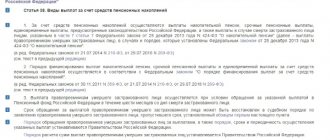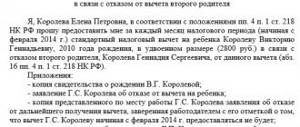Documents for commercial real estate valuation
List of documents required for the assessment of commercial real estate:
- Documents confirming the right to the object (ownership, lease, etc.).
- BTI documents for the object.
- Information about the presence of encumbrances on the property, including encumbrances with collateral or debt obligations, the presence of tenants, legal clauses, agreements, contracts, treaties, special taxes and other restrictions on use (if any).
- Data on the physical boundaries of the object (copies of a geodetic plan or map with a designation and description of the location of the object).
- Documents confirming the right to a land plot (ownership, lease, etc.)
- Data on the structures included in the facility.
- Data on property (if any) that is not immovable, but subject to assessment as part of the latter.
Who is doing
The market is flooded with offers for apartment valuation services. Organizations conducting assessments are divided into three types:
- Companies;
- Independent expert legal entities;
- Individuals registered as individual entrepreneurs.
Many banks have lists of accredited companies that they trust. It is better to order an assessment from approved organizations. Along with “white” lists, banks also have “black lists” of unscrupulous appraisers.
Before ordering the procedure, the candidacy of the selected appraiser is agreed with the bank. If the appraiser or his report is not satisfactory to the bank, you will have to order and pay for the procedure again.
When choosing an appraiser registered as an individual entrepreneur, check their liability insurance policy. It must be issued for at least 300 thousand rubles. The policy guarantees payments in the event of damage to the appraisal customer as a result of violation of the rules and standards of appraisal activities.
Look at the same topic: Which banks provide mortgages to pensioners under 75 in year [y]?
Documents for appraising an apartment
- Certificate of state registration of rights or a document on the basis of which such registration can be made.
- Identification document of the assessment customer (passport or equivalent document).
- An identification document of the owner of the apartment (passport or a document replacing it) - if the customer and the owner are different persons.
- Documents issued by the Bureau of Technical Inventory - an extract from the technical passport, floor plan, explanation of the floor plan.
- Description of existing encumbrances (if any).
- If the appraised apartment is in common shared ownership of several owners, then the documents specified in paragraphs 1 and 3 must be provided from each owner who has a share in the right to this apartment.
List of possible title documents
Speaking about additional documents, experts most often understand the following data:
- A certificate of inheritance or an open will is a fundamental document subject to the assumption of the rights of a successor. Required for payment of state duty;
- Information about other share owners - their gender, age, degree of relationship with the applicant;
- Information about the finishing of the premises and repairs (especially if it is major and done not so long ago) - this can be receipts, materials used, a list of actions and the subjects who performed them. Of course, self-pasted wallpaper will be priced cheaper than if the money was spent on employees of a specialized company;
- The actual residence of citizens who are owners and others who are under certain circumstances and civil law contracts.
Photographic material (before, after and during legally significant circumstances) will be a good help, especially if the assessment occurs due to damage to the apartment and the objects in it.
Documents for assessing office premises
List of documents required for office assessment:
- Documents confirming the right to the object (ownership, lease, etc.)
- BTI documents for the facility (extract from the technical passport, explication, floor plan)
- Permission for redevelopment (if any);
- Information about the presence of encumbrances on the property (encumbrance with collateral or debt obligations, the presence of tenants, legal clauses, agreements, contracts, agreements, special taxes and other restrictions on use), (if any)
- Documents confirming the right to a land plot (ownership, lease, etc.)
- Data on book value, utility payments and taxes.
- Availability of additional information such as: estimates for repairs carried out, information about rental payments paid by tenants, etc. is welcome
- Documents confirming the right to lease land (in case of registration of land legal relations)
What does the client receive as a result of the assessment?
According to the legislation in force in 2021, upon completion of the procedure, the customer will be issued a report containing the following information:
- The size of the total and living area of the apartment;
- Availability of parking spaces near the residential building;
- State of the floors;
- Ceiling height;
- Layout features;
- Information about the yard, location, etc.;
- Availability of gas, sewerage, water supply, electricity;
- Cost of 1 sq. m. in the apartment;
- Proximity to a metro station, shops, public transport stops and other social facilities;
- The presence or absence of a balcony/loggia, as well as their glazing;
- Condition of the facade and entrance;
- Expert opinion on the need for repair work;
- Identified defects (confirmed by photographs);
- The building material from which the house is built;
- Other information.
As you can see, in order to evaluate the mortgaged property, a potential borrower will have to collect an impressive package of documents . However, this is completely justified, as it will allow experts to correctly calculate the cost of the collateral object.
Documents for building assessment
List of documents required for building assessment:
- Data on the legal status of the property (registration certificate, title, property rights), including the exact address of the location of the property being assessed
- Information about the presence of real estate encumbrances, including encumbrances with collateral or debt obligations, the presence of tenants, legal clauses, agreements, contracts, treaties, special taxes and other restrictions on the use of real estate
- Data on the physical boundaries of the property (copies of a geodetic plan or map indicating and describing the location of the property)
- An accounting certificate on the book value of the building (if the owner of the building is a legal entity).
- Data on the condition of the land plot, including documents confirming the rights to the land plot (ownership, lease, etc.)
- Data on property that is not real estate, but subject to valuation as part of the latter
- BTI technical passport for the building (Floor plan and explication)
- Other technical documentation for the property (design and estimate documentation for construction, reconstruction; explanatory notes, as well as other documents related to the property and necessary for the appraiser).
Package of papers from individuals
To conduct a preliminary assessment of real estate, a borrower who is an individual must send the following documents to the expert company:
| Title of the document | Where and by whom is it issued? |
| Certificate of ownership of the collateral property or an extract from the Unified State Register of Real Estate. | Rosreestr or MFC. |
Document of title (indicates on what basis the mortgaged property became the property of the potential borrower):
| Owner has it. |
| Technical passport for the apartment + permission for its redevelopment (if it was carried out). | Housing Committee or any other local government body with similar powers. |
| Technical passport for residential premises, including floor plan and explication. | BTI |
| Form No. 9 indicating all persons registered in this living space. | Housing office or passport office at the place of registration of the applicant. Issued immediately upon presentation of your passport. In addition, this document can be ordered through the MFC, but then you will have to wait and visit it twice. |
| An extract confirming the absence of encumbrances on the mortgaged property. | Rosreestr or MFC. |
| Internal passport of a citizen of the Russian Federation. | Owner has it. |
| Photographs of the apartment being assessed, the entrance and the area adjacent to the house must be high-quality, clear, and taken during daylight hours. Without these photographs, the bank may not approve the mortgage application, so the potential borrower must independently verify their availability. | They are made by the appraiser himself. |
The list of required documents is considered general and depends on which office is assessing the collateral. All papers are submitted as originals. In the future, you will need to make copies of each of them, which are attached to the final report.
On a note! The only confirmation of your cooperation with the appraiser is a formal contract. If the bank refuses to issue a loan due to an incorrect report, you can return the money and re-evaluate.
Documents for assessing structures
To evaluate structures you must provide:
- Copies of inventory cards for structures and transfer devices with the mandatory presence of the following data: inventory number, date of commissioning, code and rate of depreciation, initial cost (prices on the date of commissioning) without taking into account denominations.
- An accounting certificate on the book value of structures and transmission devices as of the valuation date (indicate replacement cost, amount and percentage of depreciation and residual value).
- Copies of technical passports for structures and transmission devices.
- Property tax rate for the current year.
- Description of the structure, dimensions, its technical characteristics (in the absence of a technical passport).
- Description of transfer devices, length, material, pipe diameter, etc. (in the absence of a technical passport).
- Current lease agreements for structures with rental rate calculations.
- Acts of actual physical wear and tear of structures, transmission devices, drawn up by a specially created commission of employees of the office of the chief technologist, chief mechanic, or other technical specialists responsible for these objects, which would indicate the technical condition of structures and transmission devices (very good, good, satisfactory, conditionally suitable, unsatisfactory, unsuitable for use); percentage of their actual physical wear and tear.
- Land tax rate per 1 hectare in the current year.
- A land use act or an extract from the decision of the executive committee on the conditions for using the land.
How an expert calculates the price of an apartment
An expert assessment of the cost of housing can be carried out using various methods. However, there are no specific instructions or recommendations for the use of certain techniques in each individual case.
Typically, appraisers use the following approaches:
- Comparative. The average RS 1 m2 of similar housing is determined, taking into account the type of development, number of storeys, proximity to important infrastructure facilities, and so on. By multiplying the area of the apartment by the price of 1 m2, the expert obtains an indicative value for the cost of housing.
- Profitable. The calculation takes into account the estimated profit from the growth of the apartment's PC and income from its use, for example, rental.
- Expensive. The price of an object is determined as the sum of the costs of constructing similar real estate at the time of valuation, taking into account depreciation.
The comparative method is most often used when determining the cost of housing, but often experts combine several approaches.
You can learn about the features of calculating the price of real estate from the article “How to estimate the cost of an apartment.”
Documents for assessing unfinished construction
- Certificate of registration of ownership of the unfinished construction project (if registration has been carried out).
- Title documents for the land plot on which the object is located.
- Permitting documentation for construction.
- General explanatory note for the construction project.
- Design and estimate documentation.
- An accounting certificate on the book value of the building (if the owner of the building is a legal entity).
- An act of conservation of an unfinished object (if the object is mothballed).
- Information about the presence of encumbrances on the unfinished construction project, including encumbrances with collateral or debt obligations, and other restrictions on the use of the facility.
- Industry affiliation of the object.
- Construction start date and construction completion date
- Information about the structural system of the building (structure).
- Permitted annual power consumption (water, electricity, gas supply, etc.).
- Built-up area.
- The degree of completion of construction as a whole and for individual structural elements separately.
- Object estimate calculation (form No. 3).
- Summary estimate of construction costs.
- Certificates of acceptance of work completed from the start of construction (form No. 2).
- Certificates for hidden work performed from the start of construction.
Legislative basis of the procedure
During the examination of the value of documents, the following provisions are taken into account:
- legislative norms and legal acts of the Russian Federation regarding documentation support of the management process (Federal Law No. 125 (10/22/2004) on archival affairs, regulations on the archival fund of the Russian Federation (1994));
- regulatory orders and acts of regional management structures in relation to archives (basic rules for the work of archives of organizations (2002), regulations (approximate) on the enterprise's EC (1995));
- standard and industry-specific lists of documentation indicating the time of its storage, types of nomenclatures of files.
Assessment of the level of importance and significance of documents used in the company’s activities varies depending on a number of circumstances. Some samples are distinguished by their one-time demand for solving a single problem, after which they lose their own significance. Information of another kind does not lose relevance over a long period, so the preservation of this type of document must be ensured throughout the entire period.
Attention! Due to the loss of important information, the company may face fines or criminal penalties (against managers or responsible persons of the company). Therefore, a responsible and competent approach to the document assessment procedure will allow you to avoid situations with the destruction of data of particular importance.
Documents for the evaluation of industrial devices
This list reflects the maximum amount of information that appraisers may need to do their work. If for some reason you do not have any information from this list, please call us. We will find a solution to even the most difficult situation.
- Copies of inventory cards for structures and transfer devices with the mandatory presence of the following data: inventory number, date of commissioning, code and rate of depreciation, initial cost (prices on the date of commissioning) without taking into account denominations.
- An accounting certificate on the book value of structures and transmission devices as of the valuation date (indicate replacement cost, amount and percentage of depreciation and residual value).
- Copies of technical passports for structures and transmission devices.
- Property tax rate for the current year.
- Description of the structure, dimensions, its technical characteristics (in the absence of a technical passport).
- Description of transfer devices, length, material, pipe diameter, etc. (in the absence of a technical passport).
- Current lease agreements for structures with rental rate calculations.
Acts of actual physical wear and tear of structures, transmission devices, drawn up by a specially created commission of employees of the office of the chief technologist, chief mechanic, or other technical specialists responsible for these objects, which would indicate the technical condition of structures and transmission devices (very good, good, satisfactory, conditionally suitable, unsatisfactory, unsuitable).
Why do you need to value a car for inheritance?
The main reason for registering a car valuation for an inheritance is the tax levy (state duty). It is necessary to take into account that relatives of the first and second degrees of kinship pay only 0.3% (no more than one hundred thousand rubles) of the value of certain property. These categories include:
- spouse;
- children;
- parents;
- sisters, brothers;
- grandparents.
If we talk about more distant relatives or individuals who do not have such connections, the estimated cost of a car for inheritance for them will be 0.6% (but not more than a million rubles).
In practice, everything is simple: the lower the expert indicator of the car specified in the will, the cheaper it costs a person to pay the state duty.
A car valuation is necessary to register ownership through the court. To determine the exact price of the state fee in the statement of claim, it is necessary to make an expert assessment.
There may also be multiple claimants to the property. The car cannot be divided; an appraisal of the car is necessary to pay a clear amount to one of the rivals.










